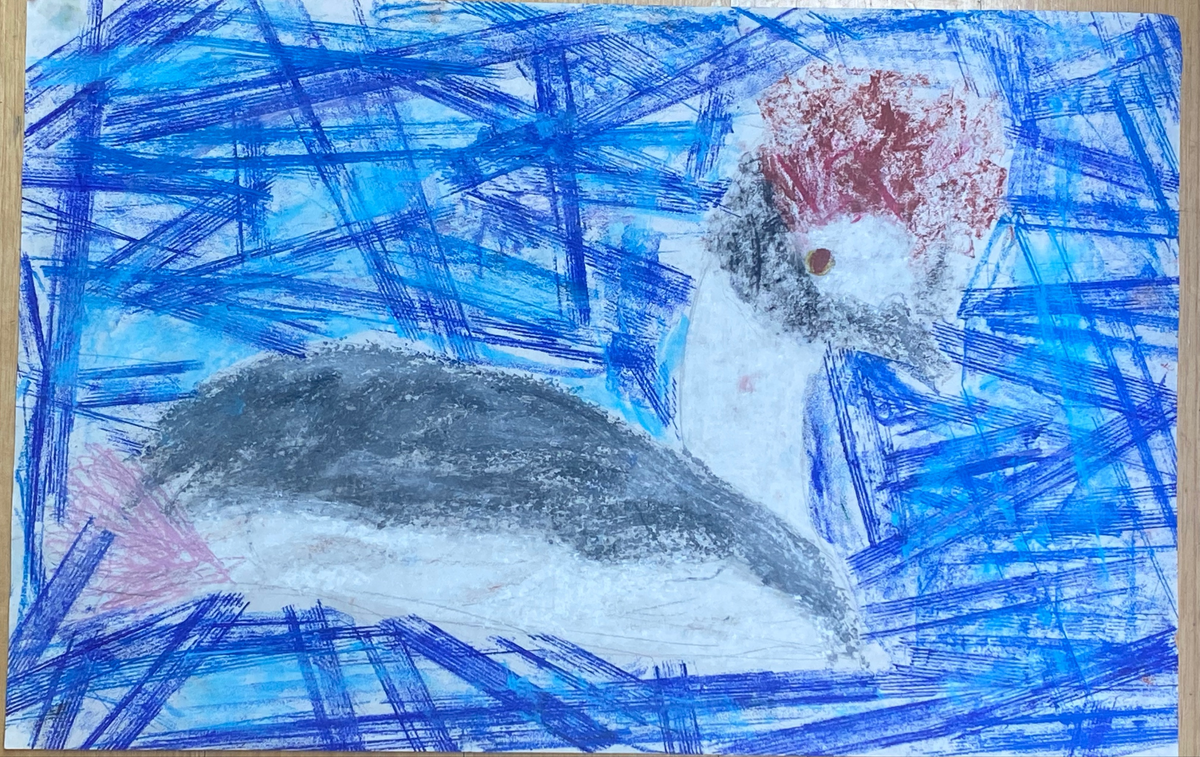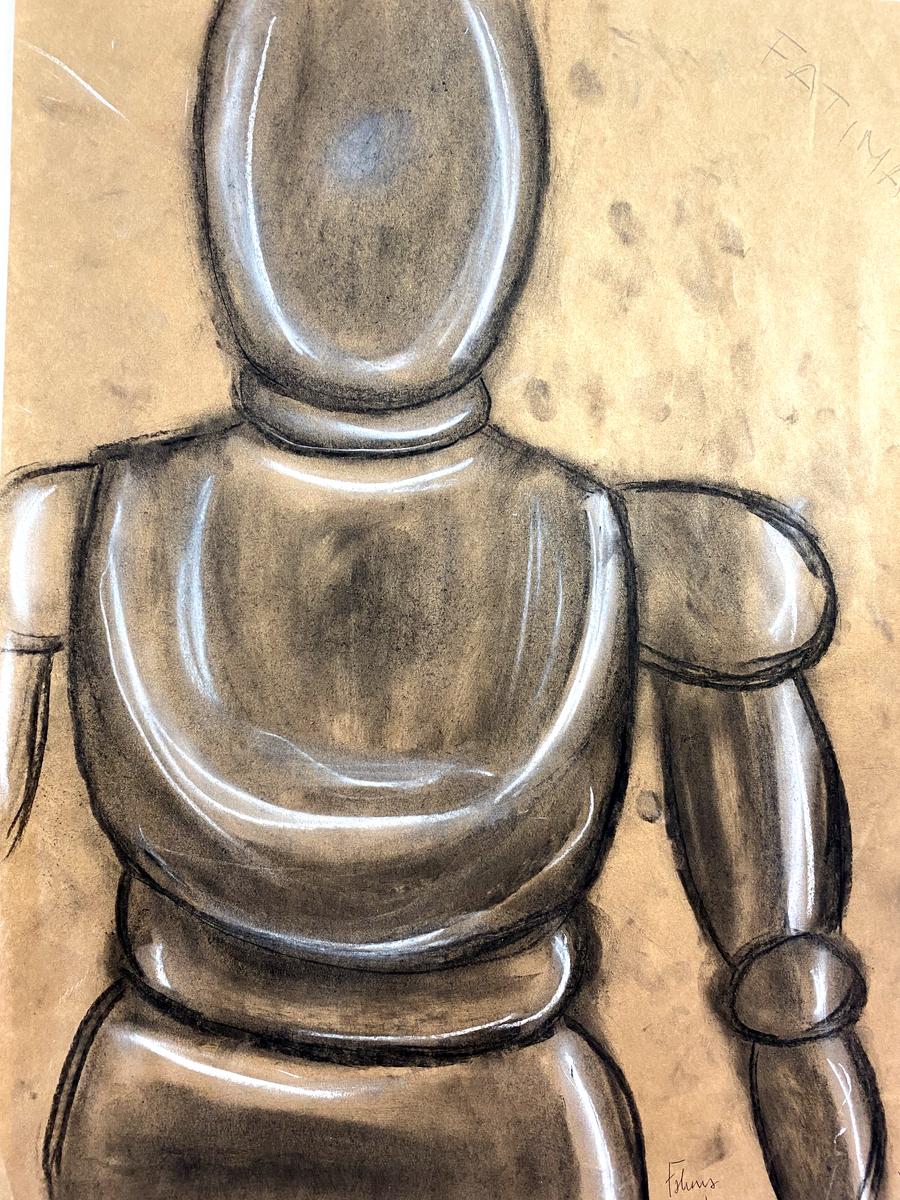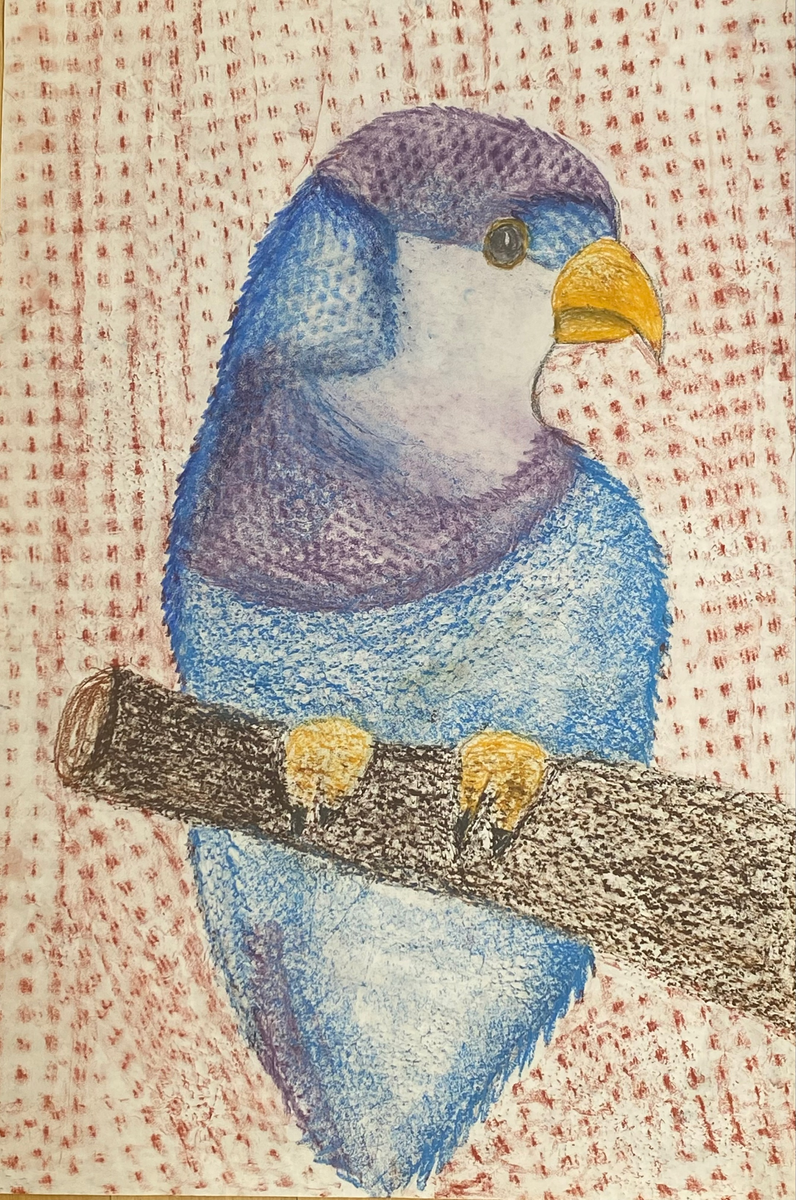Global Events (Recounted by Students)
Artwork by Nicky S. Year 11, Plenty Campus

Global Events (Recounted by Students)
Artwork by Nicky S. Year 11, Plenty Campus
By Oscar He, Year 8, The Ridgeway Campus
Monkey Pox has recently been circulating in the news as some rare cases have been popping up throughout Europe. It is an infectious viral disease that can occur in humans and some animals, spread through the handling of infected meat on bites and scratches. It can also be spread through small airborne droplets or exposure to body fluids. Lesions and swollen glands are some symptoms along with muscle pains, fever, and blisters that can last from 5-21 days.


There is no known cure for monkey pox, but the smallpox vaccine is 85% protective and people who are vaccinated may have milder cases. This is because it is believed that the two viruses are closely related. It was first found in the Democratic Republic of Congo in 1970 and there have been some cases throughout Central and West Africa since. It is especially dangerous to pregnant women or people with poor immune systems but fortunately the death rate is quite low (ranging from 1-10%).
There was a 2022 monkey pox outbreak and this marks the first time a widespread transmission of the virus has been outside Africa. It was initially identified in the UK in May, with cases being identified in all continents except for Antarctica and more than 15,000 cases in over 70 countries worldwide.


This virus has been reported in mice, squirrels, and other primates, but symptoms vary throughout different species. Animals are usually present with cold-like symptoms, hair loss, small bumps and even pneumonia in some cases. This is because it sometimes leads to secondary infections like sepsis, encephalitis, and loss of vision. After healing from Monkey Pox, glands may leave pale scars that turn into darker more permanent scars.
This current outbreak could quickly turn deadly if the right decisions aren’t made, and the correct hygiene is practised. Monkey Pox is quite contagious and could become a serious outbreak within a short period.
By Eliza Ioannou, Year 10, The Ridgeway Campus
On 24 June this year, Roe v Wade was overturned by the US Supreme Court, causing outrage across the globe and a media storm, with women worldwide, even here in Melbourne, standing up in protest of the rights of American women being removed. But why has Roe v Wade become such a point of contention, and what does it actually mean?
Roe v Wade was a legal case in the United States in 1973, which de-criminalised and legalised the previously outlawed medical procedure of abortion. In the case of Roe v Wade, the US Supreme Court ruled that banning abortion was unconstitutional as it violated a woman’s right to privacy. This precedent was considered extremely important for women’s liberty and paved the way for other significant precedents to be created, while also allowing other restrictive laws to be overturned. However, Roe v Wade was reversed in June of this year, which caused an uproar, as many worldwide proclaimed their anger against the decision.


Although the reversal of Roe v Wade does not criminalise abortion across all States in America, it instead allows the individual States to decide whether or not abortion is criminalised. This is dangerous for women in predominantly Republican states like Texas, whose State Government is more conservative, which is the case with most states in the US, and where abortion is almost certain to and already has been made illegal. At its very core there are two main opposing sides in the debate surrounding Roe v Wade, those who are dubbed ‘pro-life’ and those who are ‘pro-choice’. Indicative of the name, ‘pro-lifers’ are strongly against the Roe v Wade case and many had celebrated its reversal in June, deeming abortion as a form of homicide and, therefore, morally wrong.
Contrastingly, the pro-choice side of the argument fights for the right of the individual woman and her bodily autonomy. To those who are pro-choice, a lack of access to abortion for women, and leaving an individual with no choice but to carry a foetus to term in the event that they become pregnant, regardless of their financial circumstance, age or situation, is a violation of their rights. The reason Roe v Wade is deemed such a significant aspect of women’s rights is because of the legal protection it provides. The point made by many of those who are pro-choice, is that criminalising abortion will not remove the need for it and will instead cause women to seek out unsafe methods of abortion.


Another cause for concern surrounding the precedent of Roe v Wade being overturned, is that it will allow other major laws, such as ones legalising gay marriage to be under potential threat of reversal. The larger implications of Roe v Wade being overturned, is how much of a setback it is considered for the progression of women’s rights, how it undermines their bodily autonomy and how it is ultimately seen by many as a tool for oppression against women to maintain control.
Despite the reversal of Roe v Wade and its seemingly conclusive nature, the discourse about the impact and what it means for women in America and globally will only continue. It is essential that these discussions are prolonged far into the years to come, as the future of women’s rights is ever evolving and requires the voices of all of us, in order to truly benefit women everywhere.
By Riley Tyebji, Year 7, The Ridgeway Campus
NATO (The North Atlantic Treaty Organization) is an organisation that includes 30 countries providing a like between North America and Europe. NATO’s purpose is to through political and military means, guarantee the freedom and security of its members.
NATO was created in 1949 by Canada, The United States, and some Western European nations to provide shared security against the Soviet Union (the Soviet Union existed from 1922-1991 and was made up of 15 countries in Eastern Europe and Asia). NATO was created mainly to prevent the growth and spread of the Soviet Union to other countries in Europe. Russia claims that when the Soviet Union collapsed in 1991, the US promised the Russian president Gorbachev that NATO would not enrol any countries from the East into the organisation.
However, many countries from the East such as Poland, the Baltic Republics, Lithuania, and Romania have joined NATO since then. Currently, NATO has a total of 30 members. Now Russia feels threatened by NATO's expansion to the East and fears that Ukraine will join NATO, something that has not happened yet. Ukraine is bordered by the Black Sea to the East, the Sea of Azov to the South, and Russia to the North. Since Russia shares its border with Ukraine, Russian President Vladimir Putin wants to avoid NATO’s influence on Ukraine at all costs, hence the beginning of the Ukraine-Russian war.


The Ukraine-Russian war has initiated a major humanitarian crisis. As per the United Nations, about 6.5 million Ukrainian have lost their homes and are displaced within the country and 5.3 million people have escaped to neighbouring countries. And the Ukrainian children are exposed to many of the horrors of this war daily. In just this past month, it was verified by the UN that over 100 Ukrainian children have been killed. Many more children have been injured and displaced.
Since the war began in February 2022, many schools in Eastern Ukraine have been destroyed and damaged by missiles and heavy artillery. Schools that are not damaged are being used as refugee shelters and for military activities. Understandably, the children in Ukraine are suffering the most anguish because of the Ukraine-Russian war. However, in this digital age, all children with access to a TV, radio, phone, or computer are aware of the conflict and the bloodshed that is happening. This makes all children vulnerable making them feel lost and scared, impacting their health and wellbeing.


Russian-Ukrainian not only impact world peace, but it also significantly impacts the world’s trading among the countries. Russia is known to be the world’s largest wheat exporter in the world, responsible for 20% of global trade. It is also the world’s third biggest oil producer and the world’s second biggest natural gas producer. It is among the top five producers of nickel, steel, and aluminium. On the other hand, Ukraine is the largest producer of sunflower, sixth largest producer of corn, seventh largest producer of wheat and is among, the top ten producers of barley, sugar beet, rapeseed, and soya. The Ukraine–Russian region is also a major supplier of fertiliser around the world. When the invasion from Russia began, prices of natural gas, oil, food commodities and metals surged, affecting all countries around the world. The cost of living in all countries has jumped significantly and the impact of the war is felt across the world through higher prices for imports, particularly in energy prices.